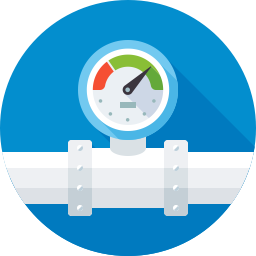 Natural gas is a fossil fuel. A fossil fuel is the result of a natural process that takes place over millions of years. What happens is that ancient plants and animals decompose and form layers over the ground. As the years pass, dirt, rocks, sand and silt bury the organic matter. A combination of pressure and heat then transform the fossils into natural gas.
Natural gas is a fossil fuel. A fossil fuel is the result of a natural process that takes place over millions of years. What happens is that ancient plants and animals decompose and form layers over the ground. As the years pass, dirt, rocks, sand and silt bury the organic matter. A combination of pressure and heat then transform the fossils into natural gas.
This type of gas is found deep underground in shale?s or wells. Sometimes, the gas is able to escape through shifts in the rock and earth. When this happens, the gas can catch on fire. It is highly flammable! However, this is how people discovered the existence of natural gas. Today, we have figured out how to use this natural resource to create different types of energy.
Natural Gas in the United States
Geologists are people who study what goes on beneath the Earth?s surface. Using special techniques, they can help to find natural gas locations. When a natural gas location is found, an exploratory or test well is set up to help determine if there is enough gas underground for production. A production well is then setup, which is used to bring the gas up to the surface.
In the U.S., there are 5 states that have a lot of natural gas. They include,
- Texas
- Pennsylvania
- Louisiana
- Oklahoma
- Wyoming
Natural gas is an important resource for many different reasons. One of the biggest reasons why we search for natural gas is because it helps us to generate:
Electricity
Some power plants use gas to move turbines, which generate electricity. These types of plants are more productive and cost less to run because they can quickly turn on and off.
Heat
Natural gas is used to heat many homes. Appliances that use natural gas like furnaces or stoves are very energy efficient. This makes using natural gas a much cheaper option.
Other Chemicals
Many companies use natural gas for power and heat to product plastics and other chemicals. In other situations, natural gas is altered to make other products like fertilizer.
Natural Gas – Step-By-Step
There are three steps to getting gas from its well all the way to your home. These steps include,
- Processing
- Transportation
- Storage
Processing
When gas is collected it can also contain oil, water, liquids and other chemicals. It is important to process the collected gas, or remove other elements to make sure that it meets government standards. Once the gas is processed, it becomes safe for us to use.
Transportation
This fossil fuel is transported via a series of underground pipelines. There are several different types of transportation pipelines. They help to get natural gas across boarders, cities and other locations. Some of these types of pipes include, interstate natural gas pipelines, intrastate natural gas pipelines and Hinshaw natural gas pipelines.
Storage
Natural gas can be stored so that there is enough to be delivered at any time. This type of gas can be stored in several areas including, depleted gas or oil fields, salt caverns and aquifers
Natural Gas ? Fast & Fun Facts
Did you know that more than half the homes in America use natural gas? That’s means about 62 million families are using natural gas right now! Take a look at a few other facts below for some more neat info.
- Gas turns into liquid when it is cooled to 260 degrees below zero.
- There is no smell or color in natural gas. The rotten egg smell is added so that it is easier to spot a leak!
- Air is heavier than natural gas.
- Natural gas is used to power many museums in order to help keep historic papers, fabric and art in great condition.
Natural Gas and the Environment
Natural gas is a fairly clean fossil fuel when compared to coal. However, it is mostly made up of methane, a powerful greenhouse gas. This can have a serious impact on the environment.
Processing plants and areas also hurt the environment. Trees, mountains, water and other wildlife are removed in order to collect natural gas. To move the gas, pipelines are also buried underground over large distances.
The United States government has passed bills and laws that required natural gas companies to treat these areas with respect. In fact, there are many Clean Air processes that run every day to make sure that collecting natural gas is as safe and environmentally friendly as possible.
Natural Gas ? Pros and Cons
Like any of the other fossil fuels, there are several pros and cons to using natural gas. Take a look at the pros and cons below to decide whether or not you would use this natural resource.
PROS
– Natural gas is the cleanest energy of all the fossil fuels.
– Used for both power and heat generation.
– There is no left over residue or waste to get rid of. It burns clean.
CONS
– Highly flammable and dangerous.
– Generates a harmful greenhouse gas.
– Complex transportation process.


